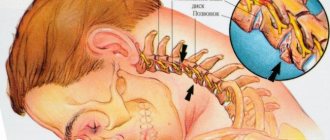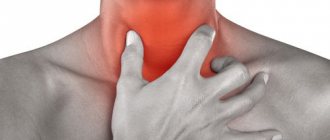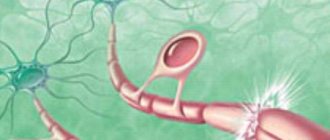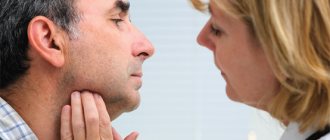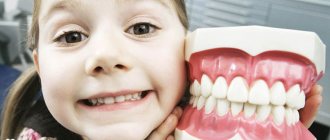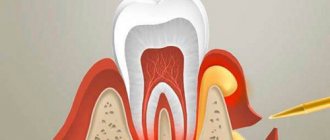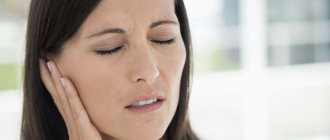Symptoms of cervical osteochondrosis in women Symptoms of cervical osteochondrosis in men General symptoms of cervical osteochondrosis Treatment and prevention of symptoms of cervical osteochondrosis
Symptoms of cervical osteochondrosis bother every 2nd person whose age has exceeded 30 years. Young and old are susceptible to this disease, its prevalence is colossal, and its consequences are varied and serious. Untreated cervical osteochondrosis can lead to vertebral artery syndrome, cervical radiculitis, deterioration in hand motor skills, vision, hearing, and serious problems with memory and other cognitive functions.
The disease is especially merciless for urban residents - symptoms of cervical osteochondrosis are observed in them already at the age of 25, earlier than any other diseases of the musculoskeletal system (except, perhaps, autoimmune ones). How to recognize the symptoms of cervical osteochondrosis in time so as not to lose your ability to work long before retirement?
Symptoms of cervical osteochondrosis in women
As a rule, symptoms of cervical osteochondrosis in women appear 5-10 years later than in men. First of all, this is due to the later onset of menopause and anatomical features (including a lighter bone structure).
Before the mass distribution of computers and the demand for “sedentary” professions, the average age of onset of symptoms of cervical osteochondrosis in women ranged from 50 to 55 years. But now the disease has “rejuvenated” to 40-45 years.
Unlike a similar problem in men, symptoms of cervical osteochondrosis in women often include:
- sudden surges in pressure, especially due to the weather;
- pallor of the face, blue discoloration of the lips and skin;
- decreased sensitivity, up to numbness, of the skin of the face and cervical-collar area, which is accompanied by tingling or goosebumps;
- a feeling of nausea, which is especially intensified in stressful situations.
It should be remembered that cervical osteochondrosis is a disease of the whole body, so it can negatively affect conception and the course of pregnancy. Also, symptoms of cervical osteochondrosis in women can cause ovarian dysfunction and disruption of the monthly cycle.
Methods for diagnosing and treating osteochondrosis of the cervical spine
The diagnosis is made by an orthopedic doctor or neurologist based on examination, X-ray or computed tomography of the spine. If an intervertebral hernia is suspected, an MRI will be required, and to assess functional circulatory disorders, rheoencephalography and fundus examination will be required.
Conservative therapy includes symptomatic measures (pain relief, anti-inflammatory therapy, antispasmodics), as well as restoration of natural cartilage tissue with the help of chondroprotectors. Acupressure massage, physiotherapy, and therapeutic exercises are also effective.
Symptoms of cervical osteochondrosis in men
Symptoms of cervical osteochondrosis in men usually appear at the age of 40-45 years. Patients often notice them during physical activity (for example, working out in the gym or lifting weights). Delayed self-diagnosis of symptoms of cervical osteochondrosis in men is associated not only with a reluctance to go to the doctor, but also with physiological prerequisites. Men have stronger and thicker vertebrae than women, and the vessels are stronger. Therefore, they may notice discomfort only when changes have already affected the intervertebral discs. Characteristic symptoms of cervical osteochondrosis in men include:
- decreased overall strength and endurance;
- deterioration of libido and erectile dysfunction;
- irritability, sometimes neuroses;
- deterioration of motor skills (“awkward fingers”);
- headaches that do not go away after taking analgesics.
Vertebral hernias with symptoms of cervical osteochondrosis are more common in men than in women.
Diagnostics
A comprehensive diagnostic study at the CELT clinic includes the following:
- examination by a Pain Clinic specialist, a neurologist, who will conduct a series of tests and make a preliminary diagnosis;
- instrumental examination (x-ray, magnetic resonance imaging, computed tomography), which allows you to clarify the data obtained during the examination, accurately determine the level of damage, identify the features of the pathology and its consequences for the spine.
General symptoms of cervical osteochondrosis
The zero and first stages of the disease can occur without pain. They are usually accompanied by discomfort after a day of work or physical activity; When you sharply turn or tilt your head, or sleep in an uncomfortable position, you may feel stiffness, which is usually attributed to a pulled muscle or other reasons.
Much more often, patients exhibit symptoms of cervical osteochondrosis, which at first glance are not related to the neck. Patients complain of:
- dizziness, headache or even acute migraine;
- balance problems (for example, when getting out of bed in the morning or suddenly rising from a sitting position);
- deterioration in speech clarity;
- breathing problems (it becomes frequent and shallow);
- increased blood pressure (when under load, it can “hit the head” so that a person loses balance);
- muscle weakness of the hands, deterioration of fine motor skills of the fingers;
- noticeable deterioration of vision, not associated with ophthalmological diseases, as well as hearing;
- sweating (sometimes accompanied by chills).
A slight crunch in the neck and a deterioration in overall physical endurance and performance may also appear. Some patients experience forgetfulness, difficulty concentrating, and their tongue begins to become slurred.
Such a “bouquet” of symptoms of cervical osteochondrosis is rare: usually one patient has only 2-3 signs, so the problem can go unnoticed for a long time, and the symptoms can be misinterpreted.
The symptoms of cervical osteochondrosis are characterized by the following localization: back of the head, cervical-collar area, upper limbs.
The intensity and specificity of symptoms varies depending on the stage of the disease:
- Stage 1: stiffness in the neck, pain in the neck when bending over, wearing a backpack, or sudden movements;
- Stage 2: initial pain intensifies, to which are added excruciating headaches, chronic fatigue, disturbances of facial innervation, absent-mindedness;
- Stage 3: due to wear of the intervertebral discs, hernias can form, which cause radiating pain in the back of the head and upper extremities, constrain the shoulders, and are accompanied by dizziness and deterioration in strength;
- Stage 4: severe destruction of cartilage tissue leads to pinching, permanent trauma and inflammation of the nerve roots of the spinal cord.
Symptoms of dizziness with cervical osteochondrosis
Symptoms of dizziness with cervical osteochondrosis can be systemic and non-systemic. Systemic vertigo involves disturbances in the functioning of several analyzers at once (visual, vestibular apparatus, receptors in soft tissues and joints), which are accompanied by a feeling as if the whole body or the whole room is spinning. Patients often feel as if the room is “moving” and they feel seasick. Unsystematic dizziness is expressed weaker and rather causes a feeling of uncertainty and unsteadiness. The world around the patient does not revolve in a circle, and the painful state makes itself felt with a feeling of mild nausea and stupor, as when leaving a very stuffy room.
Typically, the symptom of dizziness in cervical osteochondrosis is associated with other signs of the disease. Sometimes it manifests itself so strongly that it can become a reason for urgent hospitalization, since it directly threatens the patient’s health (it can cause injury, severe disturbances in the functioning of the central nervous system).
- If the symptom of dizziness with cervical osteochondrosis is accompanied by loss of consciousness and lightheadedness, the patient should immediately be provided with an influx of fresh air and placed on his back on a hard surface (preferably the floor). Pinching of an artery during cervical osteochondrosis can cause complete loss of consciousness, so it is important to restore normal nutrition to the brain. To do this, you need to lay the patient's head straight, while the neck should be extended and relaxed.
- A severe headache and a sharp deterioration in health, nausea usually indicate a severe spasm, which, in the absence of medical help, can even lead to a stroke. All the more alarming signs are muscle paralysis (of the face, shoulders).
- Impaired coordination of movements, which accompanies the symptom of dizziness, with cervical osteochondrosis also indicates a deterioration in blood circulation in the brain or spinal cord and requires emergency medical attention.
In addition to cervical osteochondrosis, symptoms of dizziness can be caused by inflammatory diseases of the ENT organs, cerebral vascular spasms, cardiovascular diseases, intoxication, and vestibular disorders. Therefore, this symptom should be carefully studied by a medical specialist.
Headache with cervical osteochondrosis
With cervical osteochondrosis, headache is not a specific symptom - it can accompany more than 20 other diseases. In case of intervertebral disc pathology, it can be caused by:
- spasms of cerebral vessels;
- pinching of the nerve roots of the spinal cord;
- increased intracranial pressure, especially against the background of general hypertension.
How does a headache hurt with cervical osteochondrosis? Symptoms of the disease vary depending on the stage of the disease, the vertebrae affected, and the specific cause of the pain. Headache with cervical osteochondrosis may come in attacks (mainly in the evening) or haunt the patient constantly.
Severe headaches, according to patients, cause a sensation of a hot needle or a burning pulsation in the brain (less often, dull compression), accompanied by numbness in the cervical-collar area, a sensation of “goosebumps” and tingling in the area from the shoulders to the back of the head. At the same time, conventional “head pain” medications usually don’t help much. These sensations cannot be ignored: if the course of the disease is unfavorable or the cardiovascular system is weak, they can lead to a stroke or heart attack. Therefore, if a headache with cervical osteochondrosis is accompanied by heart rhythm disturbances, chest pain, a feeling of compression or something torn off in the chest, you should immediately contact a cardiologist for further examination.
Headache with cervical osteochondrosis often bothers women and quickly takes on the character of migraines, especially severe after a nervous shock.
Symptoms of sore throat with cervical osteochondrosis
Symptoms of sore throat with cervical osteochondrosis are not found in all patients and are rarely interpreted correctly. It often occurs after sleep, anxiety, physical activity, sneezing or coughing, it can subside, or it can be felt constantly. The cause of unpleasant sensations is the constant compensatory tension of the neck muscles - this irritates the trachea and esophagus. A lump in the throat, as a symptom of cervical osteochondrosis, can cause the patient a psychological fear of choking, especially during sleep, during a long conversation or when swallowing solid food.
- pain is felt deep in the neck, not only in the back of it, but also behind the throat;
- when turning the head, the patient experiences characteristic discomfort, a dry, rough crunch, as if from friction between the vertebrae;
- a characteristic symptom of sore throat with cervical osteochondrosis is its localization on the side, to the right or left of the spine, and not in the center;
- Most often, a sore throat is felt above the collarbone, i.e., between the 4th and 5th vertebrae;
- congestion in the neck is accompanied by a feeling of soreness and accumulation of mucus behind the tonsils;
- symptoms of sore throat with cervical osteochondrosis may be accompanied by spasms, noticeable when swallowing, laughing, or straining;
- often they are accompanied by weakening of the neck muscles, swelling, and changes in skin sensitivity;
- the symptom of sore throat with cervical osteochondrosis increases progressively as degenerative changes in the spine progress;
- Difficulties and pain cause turning the head left and right, up and down.
Such pain is usually mild and does not attract the patient’s attention and is perceived muted. However, it can be accompanied by lumbago in the shoulders and arms, a crunch in the neck, and even toothache that has no real dental cause.
Please note: unlike tumors and other diseases in the throat area, sore throat with cervical osteochondrosis is a symptom that does not interfere with the passage of food and liquids.
Blood pressure in cervical osteochondrosis
With cervical osteochondrosis, ringing in the ears indicates high blood pressure. First of all, it is associated with compression of blood vessels, which disrupts the nutrition of the central nervous system - and therefore is compensatory in nature.
Tinnitus with cervical osteochondrosis does not constantly haunt patients: hypertension has daily dynamics. Contractions of blood vessels may be short-term responses to overstimulation of nerve endings.
In addition to ringing in the ears, with cervical osteochondrosis, blood pressure becomes noticeable:
- headache;
- feeling of tightness in the chest;
- a sharp “jump” in blood pressure after physical and emotional stress, overheating in the sun, or a sharp rise.
Do not ignore ringing in the ears with cervical osteochondrosis - surges in blood pressure can provoke a hypertensive crisis and a heart attack!
Panic attacks with cervical osteochondrosis
Panic attacks with cervical osteochondrosis are expressed in attacks of severe anxiety. Patients complain of feeling as if they are about to have a heart attack. This fear is often the main reason for visiting a doctor, after which patients are diagnosed with osteochondrosis.
Panic attacks with cervical osteochondrosis are accompanied by symptoms such as:
- chest pain that feels like your heart is jumping out of your chest;
- bad mood, depression, tearfulness associated with bad premonitions;
- sweating and shortness of breath;
- strong fear of death;
- nausea, stomach cramps or colic;
- stool disorders;
- difficulties with concentration, thinking and work;
- numbness and coldness of the extremities;
- the urge to urinate when the bladder is not full;
- The patient feels that he is throwing himself either hot or cold.
Panic attacks with cervical osteochondrosis often affect people who lead a sedentary lifestyle. They can start in an elevator or in a large crowd of people, after long, exhausting work, stress.
The duration of a panic attack with cervical osteochondrosis is usually 3-5, less often 10 minutes. After it, patients usually experience severe fatigue, depression, and a desire to lie down. Taken together, all these signs indicate a violation of cerebral circulation and require consultation with a doctor.
In addition to panic attacks, depression can be observed with cervical osteochondrosis.
Malocclusion and osteochondrosis
Suppose several teeth are missing on the upper or lower jaw, crowns have been installed, or the patient is undergoing a filling procedure. If the relief of the dentition has changed, the lower jaw is forced to shift - this will lead to overstrain of the maxillofacial muscles and misalignment of the head.
The skull is held in a level position by the first two cervical vertebrae. A distortion of the skull will gradually lead to curvature in the cervical region. As a result, an incorrect bite will lead to scoliosis of the spine, and osteochondrosis will most likely develop against its background.
Our body is structured according to the principle of symmetry. Eyes and ears must be located at the same level in order to properly perform their functions. If a misalignment of the head occurs, the vestibular apparatus detects this violation and tries to compensate for it. To keep the head in a level position, the body decides to compensate for the misalignment by bending the cervical spine.
The vertebrae of the neck receive increased load, gradually collapse, and osteochondrosis forms. Its symptoms include radicular syndrome, chronic pain and crunching in the neck, and difficulty turning the head. The shoulders also become distorted, thoracic scoliosis and osteochondrosis develop, and nerve endings are pinched. The pain radiates to the shoulder blade, arm, jaw. Since the jaw joint is close to the auditory nerve, the patient begins to complain of tinnitus.
To get rid of this problem, complex treatment is prescribed. First, it is necessary to eliminate the dental cause of osteochondrosis. Then periodically undergo a course of therapy, which is aimed at strengthening the muscle corset, restoring mobility, and relaxing the muscles of the back and neck.
Treatment and prevention of symptoms of cervical osteochondrosis
Comprehensive treatment of the symptoms of cervical osteochondrosis includes drug therapy, exercise therapy, physiotherapy, massage and maintaining a healthy diet.
Please note that at the 1st, preclinical, stage, a complete cure for cervical osteochondrosis is possible! This requires a change in lifestyle to a more active one, daily therapeutic exercises, and a balanced diet.
In advanced cases, surgical treatment may be required (if a vertebra is displaced, a hernia forms, or a severe narrowing of the lumen of the spinal column).
Massage for cervical osteochondrosis
Massage of the cervical-collar area is an excellent way to prevent the development of cervical osteochondrosis and protect against its exacerbations. It helps relieve pain, strengthens muscles and improves tissue trophism (after a session, patients often “clear their heads”). Some massage techniques are only available to qualified professionals. They should not be repeated at home, since the neck contains a huge number of nerve bundles and blood vessels. Clamping them is fraught with loss of consciousness, the development of inflammation in the nerve endings, and disruption of brain trophism.
But a simple “household” massage with warming and pain-relieving ointments, creams and balms can be performed at home. It helps relax muscles and eliminate “tightness”
Remember that if there is inflammation (swelling, increased sensitivity of the skin, local increase in temperature), massage is strictly prohibited! It will only worsen the patient's condition! Also, “home” massage is contraindicated for hypertonicity of the muscles of the cervical-collar area. In this case, you should contact a specialist or start with special therapeutic exercises.
Classic massage techniques for symptoms of cervical osteochondrosis include:
- stroking the skin from the back of the head to the subclavian area to warm the skin and relax the muscles;
- squeezing - performed by a kind of “grab” between the thumb and index finger. In this case, it is necessary to clasp the neck, gently pressing on the muscles and stretching them;
- rubbing - affects the skin and muscles, warming them up, relaxes the so-called. “protective” tension, restores impaired blood circulation;
- kneading - affects the deep layers of tissue, so it must be performed strictly by a specialist.
Please note that massage techniques, intensity and localization of massage effects vary depending on the stage of cervical osteochondrosis. If the patient is bothered by pain on only one side, the massage is performed symmetrically, starting with the healthy half. Before a neck massage, it is advisable to warm up the entire back, since the position and nutrition of the vertebrae with osteochondrosis can be disrupted according to the domino principle.
Therapeutic exercises for cervical osteochondrosis
Therapeutic exercises for cervical osteochondrosis can be performed at home and at work. An important condition: the entire set of exercises should be done daily, ideally 3-4 times a day. If you spend a lot of time at the computer or in one position, every 1.5-2 hours you should take a 5-minute break to warm up.
Exercise therapy for cervical osteochondrosis helps strengthen the neck muscles, eliminate tension, and restore blood circulation.
- Sit straight on a chair. Without sudden movements, turn your head left and right, making a 180° turn.
- Lower your head down, trying to reach your chin to your chest, but without pulling your shoulders forward.
- Tuck your chin in, trying to bring it behind your chest line.
- Sit at the table and place your elbows on it. Place your palms on your temples and turn your head, overcoming moderate resistance from your own hands. Repeat for head tilts (with your palm on your forehead).
- Pull your shoulders toward your earlobes and then lower them.
- Do a self-massage of the back of your head.
For patients with cervical osteochondrosis, water activities are recommended: swimming, water aerobics, hydromassage and others.
In addition to therapeutic exercises, patients with symptoms of cervical osteochondrosis are advised to wear special orthoses-collars, which help reduce compression of nerve endings, serve as the prevention of hernias, and combat sore throat and trophic disorders.
Physiotherapy for symptoms of cervical osteochondrosis
Physiotherapy for symptoms of cervical osteochondrosis in women and men is carried out in courses several times a year. It allows you to slow down the progression of the disease and its complications, and relieve symptoms.
For pathology of the cervical spine it is recommended:
- magnetic therapy;
- laser therapy;
- shock wave therapy;
- mud therapy and balneotherapy;
- hydromassage;
- manual therapy;
- traction therapy;
- mechanotherapy.
Medicines for cervical osteochondrosis
To relieve symptoms of cervical osteochondrosis in women and men, the following groups of drugs are used:
- Non-steroidal anti-inflammatory drugs (Nimesil, Etoricoxib) - help relieve pain, inflammation and swelling, but are taken in symptomatic courses (about 10-12 days) and do not affect the causes of the disease.
- Glucocorticoids (Prednisolone, Diprospan) are indicated to eliminate pain and decompress nerve roots in severe cases when simple analgesics and NSAIDs are ineffective. They have significant side effects and should be used strictly as prescribed by your doctor.
- Blood microcirculation correctors, angioprotectors (Pentoxifylline, Actovegin) - help improve blood circulation and protect brain vessels from damage.
- Chondroprotectors (Artracam) - affect the very cause of the disease (deterioration in the quality of intervertebral discs). This group of drugs promotes the structural normalization of cartilage tissue, its rapid regeneration and normal nutrition. Of all the medications, only chondroprotectors are truly capable of slowing down the destruction of cartilage and improving their shock-absorbing qualities (all others only relieve symptoms).
Pain due to osteochondrosis
Speaking about the cervical spine, it is necessary to explain that it consists of only 7 vertebrae. They are superimposed on each other in the form of a pyramid, in the middle of which is the spinal cord. The sixth vertebra is unique: its opening contains an artery that carries oxygenated blood to the brain. To prevent the pieces of the “pyramid” from rubbing against each other, nature provided spacers between them, i.e. intervertebral discs. When the human body is attacked by disease, these same pads suffer. Accordingly, the vertebrae are affected, the pain radiates to the head, the flow of blood to the brain worsens, which is manifested by many signs:
- nausea;
- "goosebumps" on the skin;
- pain in the eyes;
- sensitivity to light and sounds;
- noises and ringing in the ears;
- disorientation in space;
- decreased sensitivity in the area of the collarbone, scapula, and shoulder.
Taking painkillers does not have a strong effect. If the pain occurs less than 15 days per month, then the person is dealing with episodic pain. Otherwise, it will be classified as chronic.
Prevention of cervical osteochondrosis
In addition to physical activity and diet, the following tips are valuable for preventing symptoms of cervical osteochondrosis:
- equip your workplace in accordance with ergonomic standards (for example, use chairs with neck support and armrests);
- during the working day, do a warm-up every hour;
- try to sleep on low pillows and orthopedic or moderately hard mattresses without sagging;
- walk more, do yoga;
- monitor your body weight;
- carefully dose the loads, avoid traumatic activities;
- from time to time take preventive courses of massage of the cervical-collar area;
- try not to hold your head in an unnatural position for a long time (for example, pressing the phone to your ear);
- use comfortable backpacks and bags without distortion;
- correct your posture;
- give up bad habits;
- treat infectious diseases and injuries in a timely manner;
- annually take a 2-4 month course of the chondroprotector Artracam.
Conservative Treatment Options
To treat neck pain caused by degenerative disc disease, your doctor will usually recommend one or more of the following treatment options:
- Vacation or lifestyle change
. Some activities can be more painful for the neck, such as craning the neck forward when working at a computer. Abstaining or changing certain activities for a few days or weeks usually reduces pain. It is also recommended to maintain good posture (instead of slouching when sitting or bending your neck forward while driving, etc.). Eating healthy foods, staying adequately hydrated, and not smoking are also beneficial for disc health. - Treating pain with medications or injections. Over-the-counter pain relievers such as acetaminophen (eg, Tylenol), ibuprofen (eg, Advil, Motrin), or others may have some effect. If the pain is severe, a stronger pain reliever may be prescribed, such as oral steroids or muscle relaxants (such as Vicodin) or even opiates.
Injections such as facet injections, nerve or epidural blocks. These may involve injecting corticosteroids into a specific structure to reduce local inflammation:
- Caudal epidural injections
- Facet joint injections
- Interlaminar caudal epidural steroid injections
- Transforaminal epidural injections
- Selective nerve root blocks
- Medial branch blocks
- Ice and heat
can be used in the treatment of osteochondrosis of the cervical spine. - Exercise therapy.
Most non-surgical programs for the treatment of osteochondrosis of the cervical spine will include certain exercise programs, both isometric and stretching. The selection of exercises should be carried out by a qualified specialist (physical therapy doctor), since inadequate exercises can lead to a worsening of the condition. In addition, exercises should be selected taking into account the individual characteristics of a particular person. In general, increasing strength and flexibility in the neck can reduce the risk of pain and, to some extent, slow down degenerative changes in the discs. - Manual therapy
. The cervical spine can be manually adjusted by a qualified healthcare professional to improve range of motion and/or reduce pain. Depending on the individual patient's symptoms, physical examination and/or imaging should be performed before manual manipulation of the neck. - Physiotherapy
- Massage
- Acupuncture
- Corseting
